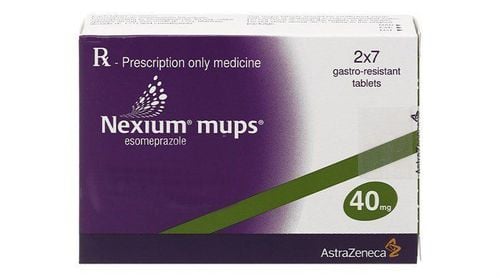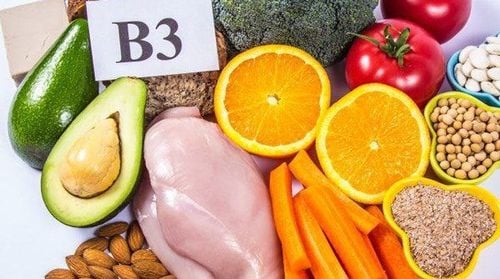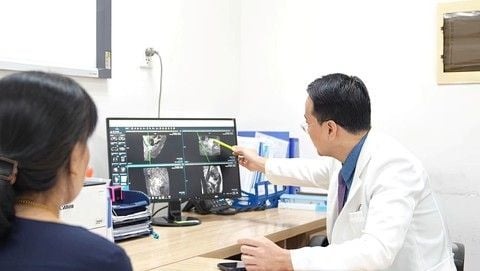This article has undergone expert review by clinicians in the Department of Pediatrics and Neonatology at Vinmec International Hospital Hai Phong.
Children at risk of vitamin D deficiency due to suboptimal cutaneous synthesis of vitamin D from sunlight exposure or insufficient dietary intake should receive vitamin D supplementation as a preventive measure. Parents are encouraged to consult the following article for guidance on appropriate vitamin D supplementation in children
1. Vitamin D dosage recommendations for humans
For children:
Infants and newborn who are exclusively breastfed or partially breastfed (supplemented with formula) need a daily vitamin D supplement of 400 IU, starting a few days after birth
Supplementation should be discontinued once the infant is weaned and consuming 1 liter of vitamin D-fortified milk daily (infant formula for those <12 months or bovine milk for those >12 months. If milk consumption is less than 1 liter/day, supplementation at 400 IU/day should be maintained. Continue supplementation until the child consumes sufficient vitamin D-rich milk daily.
Older children who don't get enough vitamin D (400 IU per day) from food also need a 400 IU daily supplement.
Children at high risk of vitamin D deficiency, Individuals, such as those taking certain medications or with chronic illnesses, may need higher doses of vitamin D
Common vitamin D supplements for children:
Sterogyl (Alcoholic Vitamin D2 solution, 1 drop = 400 IU), administer 1 drop per os daily.
Infadin (Oil-based Vitamin D2 solution, 1 drop = 800 IU), administer 1 drop per os daily or every other day.
Vitamin D3 B.O.N (Oil-based Vitamin D3, 200,000 IU/1ml/ampoule), administer 1 ampoule intramuscularly every 6 months (may be increased to 2 ampoules every 6 months for children with limited ultraviolet light exposure or increased skin melanin content).

For adults
Adults aged 19-70 need a daily vitamin D supplement of 600 IU, and adults over 70 need 800 IU daily.
Supplementing the appropriate dose of vitamin D for both children and adults
2. How dangerous is vitamin D toxicity?
Vitamin D toxicity is very rare but carries potential health risks, which occurs when vitamin D concentrations in your body get too high (a blood level of 25-hydroxy vitamin D consistently above 200 ng/ml is considered potentially toxic). This is typically attributed to excessive vitamin D supplementation, rather than dietary intake or sun exposure. The body possesses regulatory mechanisms for vitamin D synthesized via ultraviolet radiation, and typical dietary sources do not contain excessively high vitamin D concentrations
The primary consequence of vitamin D toxicity is hypercalcemia, which can lead to anorexia, nausea, and emesis. Patients may feel tired and need to urinate frequently. High calcium levels can also cause calcium to build up in blood vessels and tissues, which can damage the heart, blood vessels, and kidneys. Research shows that taking both calcium (1,000 mg/day) and vitamin D (400 IU) in postmenopausal women increases the risk of kidney stones by 17% over 7 years.
Treatment for vitamin D toxicity involves stopping high-dose vitamin D supplements, stopping calcium supplements, eating a low-calcium diet, and drinking plenty of fluids or receiving intravenous fluidsDoctors may prescribe corticosteroids or diuretics to help lower calcium levels in the blood
In cases of acute vitamin D toxicity, when it’s caught soon after someone takes a very high dose of vitamin D, doctors may induce vomiting or perform gastric lavage (stomach pumping) to prevent further absorption of vitamin D
3. How to supplement vitamin D for children
3. How to supplement vitamin D for children

The daily vitamin D requirement is 400-600 IU, which isn't much different between children and adults. Older adults may need slightly more due to poorer absorption, but usually no more than 1,000 IU per day.This means that even if a blood test shows normal vitamin D levels, but you don't get much sun, you can still take a daily maintenance dose. If you're deficient in vitamin D, you'll need a higher treatment dose, possibly up to 4,000 IU per day, for about 3 months. Once vitamin D levels are back to normal, switch back to the daily maintenance dose
To prevent rickets in children, daily sun exposure is recommended, ideally for 20-30 minutes in the morning (before 9 am).In situations precluding adequate sun exposure (e.g., winter births or limited living space), vitamin D supplementation should commence within the first week of life and continue until 2 years of age, Older children with sufficient outdoor activity or without clinical signs of rickets typically do not require supplementation.
You can supplement vitamin D for children as follows:
For Infants from 2 weeks to 18 months old: 800-1,000 IU daily (if healthy), 1,500 IU (if they get little sun), and 2,000 IU (if they have darker skin).
Children from 18 months to 5 years old: Use the above doses only during the winter when there's less sunlight. For children with rickets, they need 1,200-5,000 IU/day for 4 weeks, then continue with a preventive dose.
However, all of this should be under the guidance of a doctor after clinical assessment. Parents shouldn't give their children vitamin D supplements without medical advice, as it can have unwanted consequences. A balanced dietary intake is crucial for ensuring adequate nutrient provision. Given the critical role of vitamin D in pediatric development, parents should prioritize its adequate provision
If mothers are concerned about vitamin D deficiency in their children, they should ask their doctor for a blood test. Infants exclusively breastfed, born during winter months, or with limited sun exposure should also be assessed by a doctor for possible vitamin D supplementation. Even older children and adults who don't get sun exposure may need vitamin D supplements. Obese children are at higher risk of vitamin D deficiency.
Giving children vitamin D supplements orally in the morning or evening, on an empty or full stomach, doesn't affect vitamin D absorption. However, if taken with calcium, it's best to take it in the morning, as calcium taken in the evening can increase the risk of kidney stones.
Vitamin D is fat-soluble, so it's stored in the liver for the body to use later. This means that in addition to daily maintenance doses, higher doses can be given periodically (as prescribed by a doctor).
Please dial HOTLINE for more information or register for an appointment HERE. Download MyVinmec app to make appointments faster and to manage your bookings easily.
To arrange an appointment, please call HOTLINE or make your reservation directly HERE. You may also download the MyVinmec app to schedule appointments faster and manage your reservations more conveniently.










